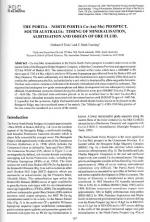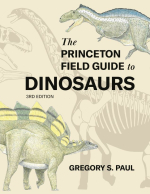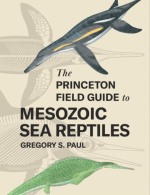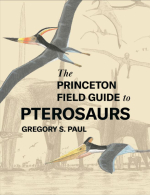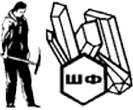The Almalyk porphyry Cu-Au system of eastern Uzbekistan encompasses the giant ore deposits at Kal'makyr (2.5 Gt @ 0.38% Cu, 0.5 g/t Au) and Dalnee (2.8 Gt @ 0.36% Cu, 0.35 g/t Au). The Sarycheku orebody (200 Mt @ 0.5% Cu, 0.1 g/t Au) is part of the Saukbulak porphyry Cu-Au system, some 18 km to the south. Both systems are associated with the second, Middle- to Late-Carboniferous, pulse of magmatic activity within the Devono-Carboniferous Valerianov-Bertau-Kurama volcano-plutonic belt that is the main element of the Middle Tien Shan terrane in Central Asia. Previous K-Ar dating of the ore-related porphyry intrusive and the mineralisation has returned ages in the range of 310 to 290 Ma, whereas recent U-Pb zircon dating reported for the intrusive sequence in the Almalyk district partially overlaps in the range of 320 to 305 Ma, with ore-related porphyries 315 to 319 Ma.
Mineralisation at both Kal'makyr and Dalnee is predominantly in the form of stockworks with lesser disseminations, and is associated with Late Carboniferous quartz monzonite porphyry plugs intruding earlier dioritic and monzonitic intrusive rocks of the same magmatic complex. The orebodies take the form of a cap like shell developed above and draped over the flanks of the related quartz monzonite porphyry stock. The dominant hosts to ore are the monzonite and diorite wall rocks, with the quartz monzonite porphyry only containing ore in its outer margins, surrounding and/or overlying a barren core. The focus of stockwork development is fracturing related to both the intrusive contact of the porphyry stock and to crosscutting faulting. Alteration comprises an early K-silicate phase followed by albite-actinolite and peripheral epidote-chlorite-carbonate-pyrite propylites, overprinted by an abundant phyllic episode which is closely related to the final distribution of the ore. Associated mineralisation commenced with barren quartz-hematite veining, followed by quartz-magnetite, quartz-pyrite-molybdenite-chalcopyrite with the bulk of the contained gold, quartz-carbonate-polysulphide with lesser gold, then by zeolite-anhydrite, and finally carbonate and barite veining. Subsequent oxidation and uplift developed a layer of oxide ore, a limited leached cap and supergene sulphide enrichment, largely in zones of fault related fracturing.




